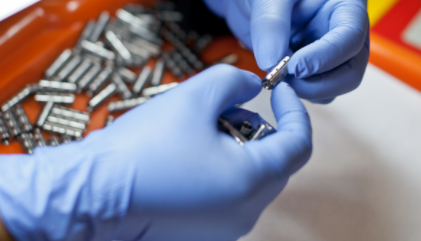Inspection services are becoming more and more important for us because they can reduce risk, control quality and quantity, and meet all relevant regulatory requirements. What are the types of inspection? There are 7 types of inspection in total, including floor inspection, centralized inspection, combine inspection, functional inspection, first piece inspection, pilot piece inspection, and final inspection. Today, let’s take a look at in everything you need to know about all types of inspection and quality control.

Floor Inspection
In this system, this inspection is performed at the place of production. It suggests the checking of materials in process at the machine or in the production time by patrolling inspectors. These inspectors move from machine to machine and from on to the other work centers. Inspectors have to be highly skilled. This method of inspection minimizes the material handling, does not disrupt the line layout of machinery and quickly locates the defect and readily offers field and correction.
Advantages
Detection of errors of the source reduces scrap and rework.
Correction is done before it affects further production, resulting in saving the cost of unnecessary work on defective parts.
Material handling time is reduced.
Job satisfaction to the worker, as he can’t be held responsible for bad work at a later date.
Great number of pieces can be checked, then the sample size
Do not delay production.
Disadvantages
Delicate instruments can be employed.
Measuring or inspection equipment has to be recalibrated often as they are subjected to wear or dust.
High cost of inspection because of numerous sets of inspections and skilled inspectors.
Supervision of inspectors is difficult due to vibration.
Pressure on inspector
Possibility of biased inspection because of worker
Centralized Inspection
Inspection is carried in a central place with all testing equipment, sensitive equipment is housed in an air-conditioned area. Samples are brought to the inspection floor for checking. Centralized inspection may locate in one more place in the manufacturing industry.
Advantages
Great degree of inspection due to sensitive equipment.
Less number of inspectors and tools.
Equipment needs less frequency of recalibration
Cost of inspection is reduced
Unbiased inspection
Supervision of inspectors made possible
No distraction to the inspector.
Disadvantage
Defects of the job are not revealed quickly for the prevention
Greater material handling
The high cost of products is subjected to production before they are prevented.
Greater delay in production
Inspection of heavy work is not possible.
Production control work is more complicated
Greater scrap
Combine Inspection
Combination of two methods whatever may be the method of inspection, whether floor or central. The main objective is to locate and prevent defects that may not repeat themselves in subsequent operations to see whether any corrective measure is required and finally to maintain quality economically.
Functional Inspection
This system only checks for the main function, the product is expected to perform. Thus, an electric motor can be checked for the specified speed and load characteristics. It does not reveal the variation of individual parts but can assure combine the satisfactory performance of all parts put together. Both manufacturers and purchasers can do this if numerous articles are needed at regular intervals. This is also called assembly inspection.
First Piece Or First Off Inspections
The first piece of the shift or lot is inspected. This is particularly used where automatic machines are employed. Any discrepancy from the operator as a machine tool can be checked to see that the product is within control limits. Except for the need for precautions for tools we are checked and disturbance in machine set up, this yields good results if the operator is careful.
Pilot Piece Inspection
This is done immediately after a new design or product is developed. Manufacturer of product is done either on the regular shop floor if production is not disturbed. If production is affected to a large extent, the product is manufactured in the pilot plant. This is suitable for mass production and products involving a large number of components such as automobiles airplanes etc., and modification in the design or manufacturing process is done until satisfactory performance is assured or established.
Final Inspection
This is also similar to functional or assembly inspection. This inspection is done only after the completion of work. This is widely employed in process industries where this is not possible, such as electroplating or anodizing products. This is done in conjunction with incoming material inspection.